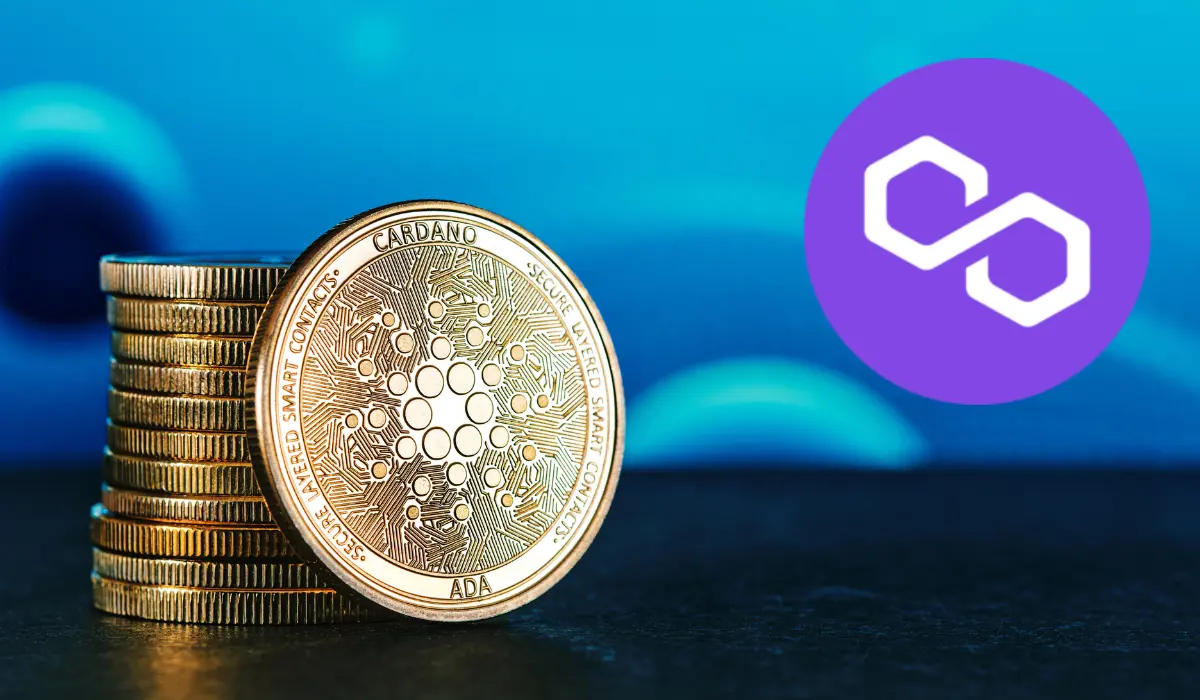Cardano and Polygon are two smart contract-enabled networks with large communities. They seek to address Ethereum’s shortcomings — namely, its lack of scalability and high transaction costs. ADA and MATIC are the native assets and play a similar role in the networks’ consensus protocols. In this ADA vs MATIC article, we’ll be comparing the two assets.
What Is Cardano?
Created in 2017, Cardano is a delegated PoS blockchain developed by a team of academic researchers and skilled engineers. The platform prides itself on its rigorous testing using evidence-based methodologies.
Cardano uses a novel, provably secure consensus mechanism called Ouroboros. Like other proof-of-stake implementations, validators must put up a stake in the network’s native currency — in this case, ADA — to propose changes to the blockchain. However, Cardano relies on stake pools, to which ADA holders can delegate funds.
While the implementation is more centralized (fewer nodes) than the likes of Ethereum or Bitcoin, it does make Cardano fast, cheap, and environmentally friendly. Cardano can process around 250 tps (Ethereum manages just 15) and fees are usually below $1.
Like other smart contract platforms, Cardano has its own decentralized finance and NFT ecosystems. However, neither is as established as market leaders like Ethereum and Solana.
What Is Polygon?
Polygon is technically building a collection of scaling solutions, when most people talk about it, they are actually referring to Polygon PoS. Formerly known as Matic Network, Polygon PoS is an Ethereum side-chain implementation built as a scaling mechanism for the dominant smart contract network.
The network can support up to 7,000 transactions every second. Polygon PoS is fully compatible with Ethereum assets following common ERC standards (NFTs and tokens). The network is also fully compatible with Ethereum, meaning developers can deploy already-proven code with minimal changes.
Polygon’s native currency, MATIC, is used as a medium of exchange and within the network’s proof-of-stake consensus mechanism. Additionally, users pay transaction fees in MATIC, which are around 10,000x lower than on the Ethereum main network.
See Also: Why Crypto Market Is So Down? 8 Major Reasons
How Do Cardano and Polygon Work?
A major difference between the two networks is that Polygon is a Layer-2 for Ethereum and Cardano is a Layer-1 network. Cardano can already process more transactions than Ethereum. However, when smart contracts were activated on the network, it became clear that its current throughput was insufficient.
Hydra is Cardano’s solution to Cardano’s lack of scalability. Like Polygon PoS, Hydra provides a transaction execution environment away from the main blockchain and makes additional block space available. This effectively reduces transaction fees for those transacting on the base layer.
Similarities Between Cardano and Polygon
Polygon and Cardano have several similarities:
- Both delegated proof-of-stake blockchains.
- Both were created to enable more transactions per second than Ethereum.
- Support growing DeFi, NFT, GameFi, and other niches.
- Rely on their native assets for consensus.
See Also: Will Cardano (ADA) Be as Big as Ethereum?
Conclusion
Cardano and Polygon are similar in their implementation and use cases. Developers can deploy applications using native smart contracts on the networks. Decentralized exchanges, for example, can facilitate swaps between compatible assets. And while a Polygon-based DEX could make swaps between MATIC and ETH, it could not support BUSD to BNB.
Beyond that, the two are quite different. Polygon is firmly part of the Ethereum ecosystem. It has a quick and reliable bridge connecting the two networks. As such, it enjoys the overflow of the dominant smart contract platform’s network effects.
Cardano, on the other hand, is a Layer-1 network. Although its community is strong, it has not seen the same kind of adoption as Ethereum. Since it is now relying on scaling via Layer-2 solutions, it is following a path more closely aligned with Ethereum’s roadmap. Thus, it may struggle to catch the leading platform.





